





Central Hatching - Wide Centrelines
Central hatching (painted medians) and wide centrelines increase the separation between traffic travelling in opposite directions on undivided roads. This reduces the risk of head-on crashes. In addition, central hatching can be used to narrow wide lanes and therefore encourage lower speeds.
Central hatching may be used in both rural and urban areas. In urban areas, it provides some protection to pedestrians crossing the road, and may be coupled with pedestrian crossing facilities, such as refuge islands to provide added security.
If the hatching is wide enough, it can contain a turn lane. Where road rules permit driving on painted hatching, it is often used as an informal turn lane.
In rural areas central hatching and wide centrelines can be used with rumble strips or pavement markers to alert drivers when they are leaving their lane.
Central hatching and wide centrelines can be installed over a continuous length of road or at specific points – for example, curves and crests in the road.
- Fewer head-on and overtaking crashes.
- Can remove turning vehicles from through traffic lanes, resulting in fewer rear-end and turning crashes and improved traffic flow.
- Improved delineation.
- Some reduction in speeds.
- Possible protection for pedestrians.
- Inexpensive.
- If rumble strips, or other raised pavement devices are also used, the risk to motorcycles and pedestrians (trip hazard) must be considered.
- Coloured surfacing may be applied to the hatched area to further enhance the conspicuity of the treatment.
The Star Rating Demonstrator is a freely available tool with the iRAP online software, ViDA. With the Star Rating Demonstrator, it is possible to explore the impact that this Safer Roads Treatment has on risk.
Treatment Summary
Costs | Low |
Treatment life | 1 year - 5 years |
Potential casualty reduction | 10-25% |
Case Studies
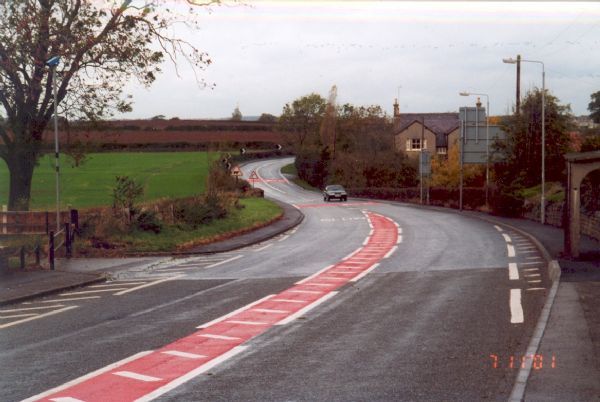 Central hatching median. This type of median decreased the likelihood of head-on collisions on undivided roads. Image credit: iRAP
Central hatching median. This type of median decreased the likelihood of head-on collisions on undivided roads. Image credit: iRAP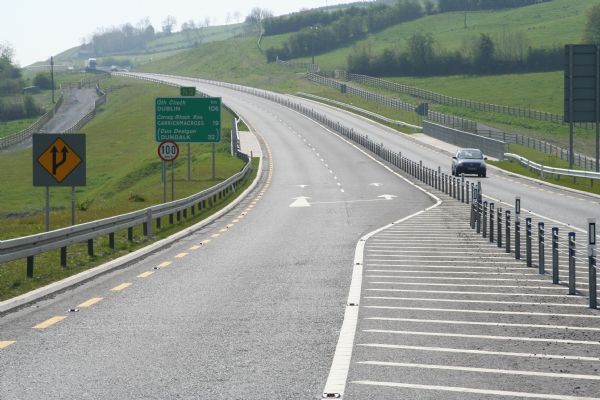 A divided road in Ireland with 2+1 lane configuration and wire-rope median barrier. Image credit: EuroRAP
A divided road in Ireland with 2+1 lane configuration and wire-rope median barrier. Image credit: EuroRAP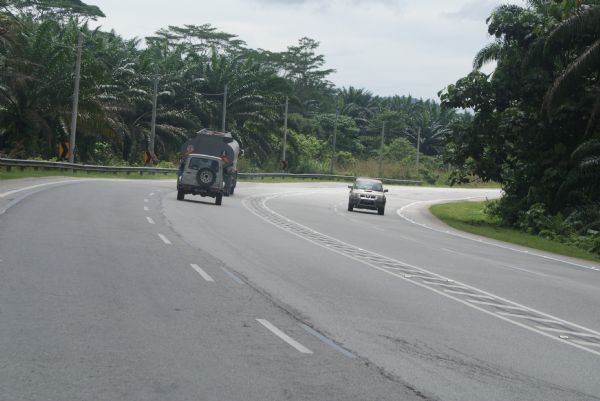 Road with central (ladder) hatching median in Perak, Malaysia. Image credit: MIROS
Road with central (ladder) hatching median in Perak, Malaysia. Image credit: MIROS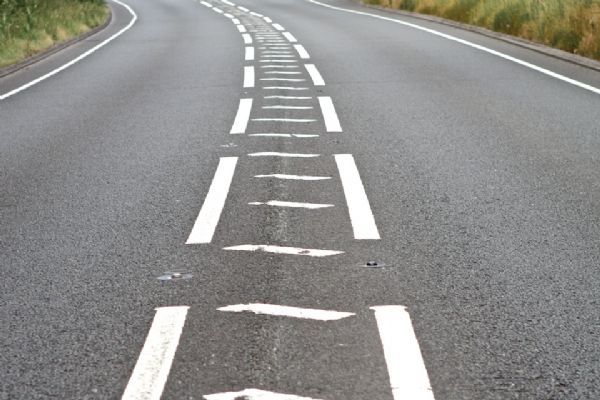 Central (ladder) hatching on A21, UK. Image credit: Unknown
Central (ladder) hatching on A21, UK. Image credit: Unknown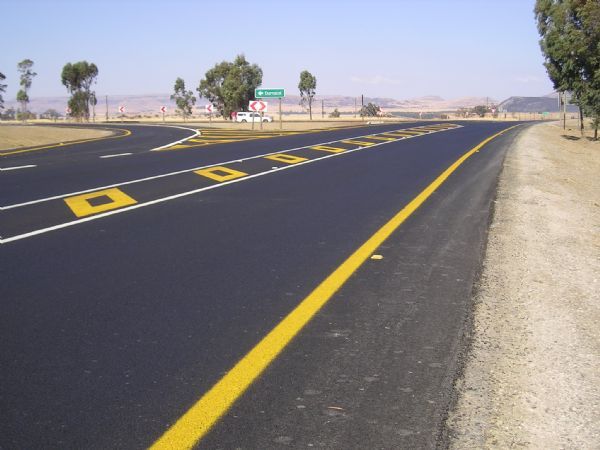 Central hatching at an intersection in South Africa. Image credit: iRAP
Central hatching at an intersection in South Africa. Image credit: iRAP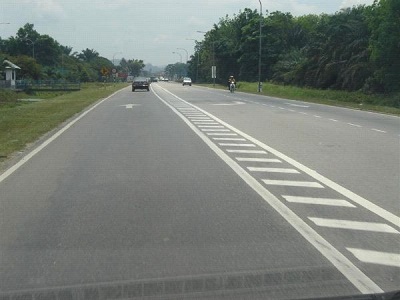 Central hatching in South America. Image credit: Doug Harwood
Central hatching in South America. Image credit: Doug Harwood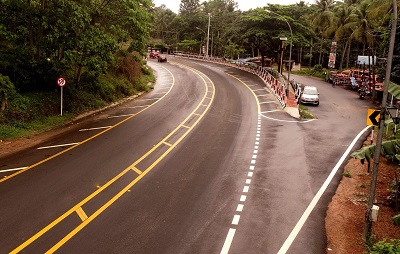 Curve with central hatching median. Image credit: Kerala State Transport Project
Curve with central hatching median. Image credit: Kerala State Transport Project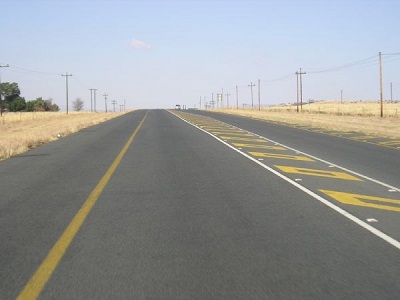 Good road surface South Africa. Image credit: iRAP
Good road surface South Africa. Image credit: iRAP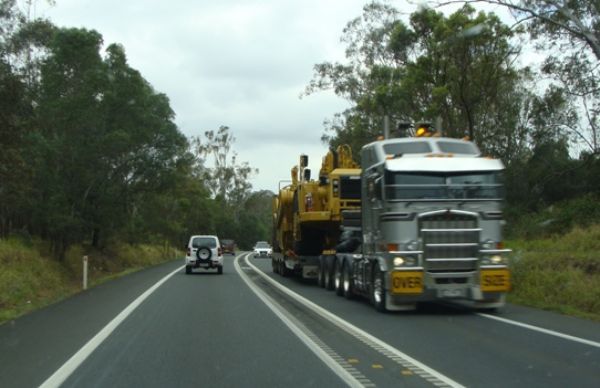 Showing wide centreline treatment incorporating median rumble strips, Old Bruce Highway, Australia. Image credit: Unknown
Showing wide centreline treatment incorporating median rumble strips, Old Bruce Highway, Australia. Image credit: Unknown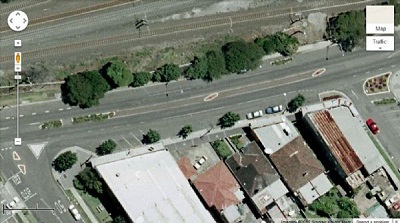 Pedestrian refuges, bicycle lanes, delineation and one-way road treatment. Image credit: Google Maps
Pedestrian refuges, bicycle lanes, delineation and one-way road treatment. Image credit: Google Maps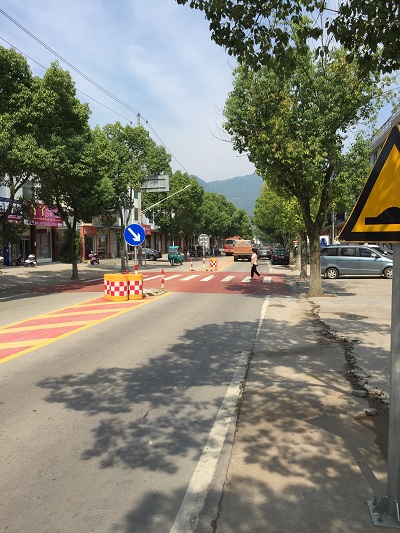 Wide center line treatment on undivided road in QLD, Australia. Image credit: Ken Thomason
Wide center line treatment on undivided road in QLD, Australia. Image credit: Ken Thomason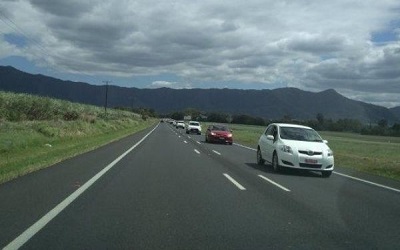 Wide center line treatment on undivided road in QLD, Australia. Image credit: Ken Thomason
Wide center line treatment on undivided road in QLD, Australia. Image credit: Ken Thomason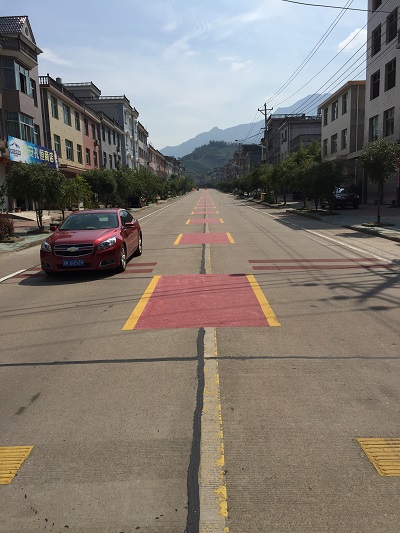 Road with central hatching median in China. Image credit: Greg Smith
Road with central hatching median in China. Image credit: Greg Smith










